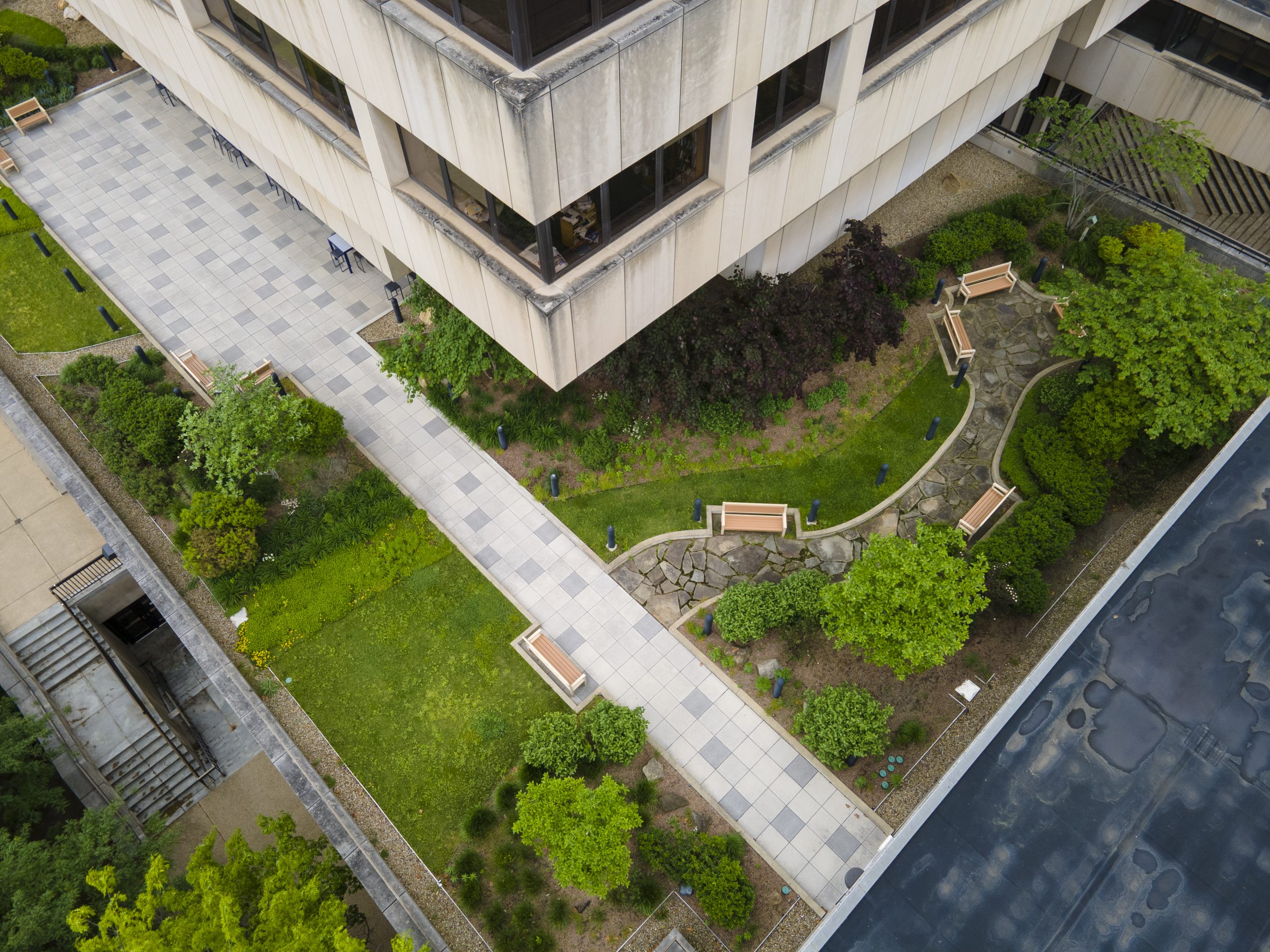Pitt has 11 green roofs of various types distributed across 9 Pittsburgh campus buildings. The benefit of green roofs include:
- Stormwater retention – Green roofs capture stormwater, reducing the frequency of combined sewer overflows, and helping prevent erosion and pollution caused by stormwater runoff (1).
- Reducing energy use – Green roofs provide insulation which creates energy savings inside the building due to less pressure on the HVAC system (1).
- Reducing the urban heat island effect – The urban heat island effect is when human activities and construction in cities, such as buildings, cause the surrounding area to be significantly warmer. The consequences of the urban heat island effect range from higher energy costs to human health concerns. Green roofs help reduce this effect by covering dark roofs with vegetation that helps absorb solar radiation better. (1 & 2)
- Providing habitat for pollinators – Green roofs can provide habitat for pollinators. Beginning in the 19th century, pollinator populations have decreased due to loss of habitat, loss of nesting locations, and increased use of pesticides. Pollinators are integral to the continuation of up to 95% of the Earth’s plants that need pollination to reproduce; as a result, installing green roofs with pollinator friendly plantings is a great way to ensure that pollinators thrive.
- Extends the life of the roof – Green roofs help extend the life of the roof underneath it due to protection from ultraviolet light and hot temperatures. This provides savings because less maintenance is required (3).
